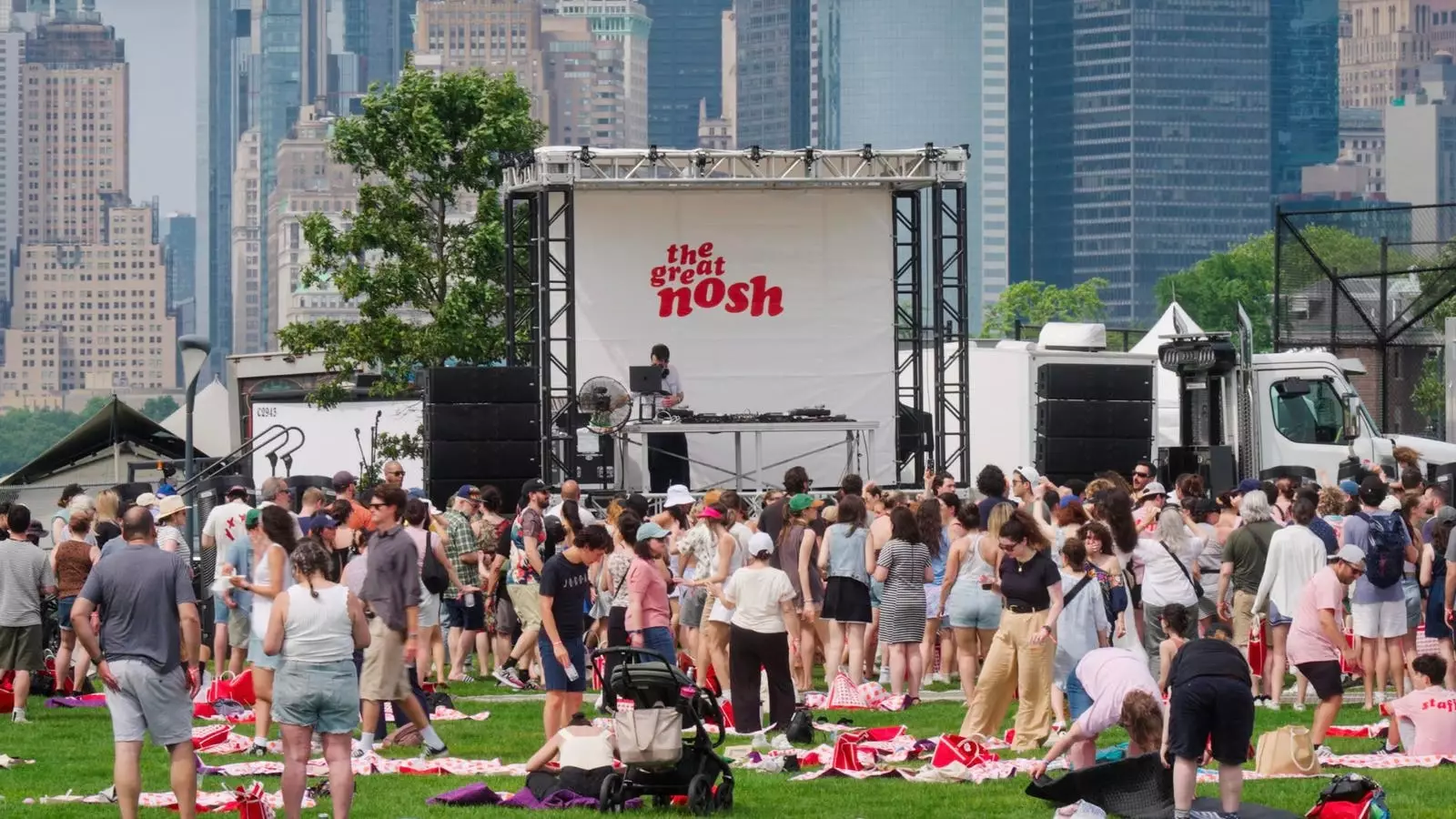In an era characterized by division and global uncertainty, events like the inaugural GreatNosh on Governors Island serve as powerful affirmations of shared heritage and community resilience. This vibrant gathering, envisioned by Naama Shefi and the Jewish Food Society, is not just a festival of flavors but a bold statement about the capacity of food to unite, educate, and inspire. As over 2,000 attendees streamed onto the island, the event exemplified how cultural expressions—particularly through culinary traditions—can foster a sense of belonging and pride amid societal fragmentation.
The event’s core intention was to create a multi-sensory experience that transcended conventional notions of a food festival. It was designed as an immersive journey—an escape from the hectic pace of city life into a space where history, identity, and innovation coexist. This approach demonstrates an understanding that food is much more than sustenance; it’s a living narrative that captures the complexities of history, migration, and adaptation. By bringing this story to life in a communal setting, GreatNosh challenged attendees to see their food traditions as evolving diasporic tapestries, kaleidoscopic in their diversity and rich in their depths.
This reimagining of Jewish cuisine as a dynamic and inclusive cultural mosaic is central to the event’s purpose. The festival showcased dishes that rebel against stereotypes of monolithic Jewish identity—highlighting regional flavors, innovative collaborations, and personal stories behind the recipes. From schnitzel-and-chips served with modern flair to reinterpreted traditional dishes like marbled rye roti Reubens—an innovative mashup blending Jewish and Asian influences—the event spotlighted how culinary fusion reflects a broader cultural continuum. The accessibility of these dishes encouraged individual curiosity, sparking conversations about migration, tradition, and the resilience of Jewish communities across the globe.
Transforming Geography into a Cultural Stage
The choice of Governors Island as the venue was strategic and symbolic. Detached from the city’s relentless pace, the island created an oasis where attendees could pause and immerse themselves in the festival’s communal vibe. This physical separation isn’t accidental; it embodies a deliberate act of creating space—both literal and metaphorical—for reflection, connection, and celebration. The setting invoked the idyllic—and historically significant—Sabbath picnics of Shefi’s childhood on a kibbutz, linking agricultural roots to contemporary urban festivities. The event’s timing near Shavuot, the agricultural holiday marking the harvest, further rooted it in themes of abundance, gratitude, and continuity.
Furthermore, the festival’s emphasis on accessibility and inclusivity stands out. Attendees ranged from culinary novices to seasoned food lovers, and the programming intentionally fostered dialogue and discovery. The presence of renowned chefs like Gail Simmons and Pati Jinich hosting workshops on challah braiding, pickling, and pastry rolling exemplified this approach. These demonstrations weren’t mere entertainment; they functioned as gateways into understanding the cultural significance of traditional practices, reaffirming the importance of passing down heritage amid modernity. Such moments highlight how food education can serve as a bridge—connecting generations and fostering a sense of stewardship over cultural narratives.
Another noteworthy aspect is the festival’s emphasis on innovation and cross-cultural collaboration. The partnership between chefs and local artisans illustrates a wider movement towards celebrating diversity within tradition. The vegetarian banchan bialy crafted by Zoe Kanan and Sunny Lee is a prime example—an inventive fusion that symbolizes how Jewish and Korean flavors can intertwine harmoniously. This approach challenges the often rigid perception of cultural boundaries, advocating instead for fluidity and experimentation that mirror the lived realities of diaspora communities.
Food as a Medium for Connection, Reflection, and Pride
Perhaps the most compelling element of GreatNosh is its success in igniting conversations about identity, migration, and resilience. The act of tasting unfamiliar dishes such as Iraqi-Jewish sabich sparked dialogues about historical migrations and the rich tapestry of Jewish life beyond Western stereotypes. Each dish served as a vessel carrying stories—of migration, survival, adaptation, and community building. In this way, food becomes a living archive—a dynamic record of movement, resilience, and cultural synthesis.
The event’s impact extends beyond immediate tastes; it plants seeds of curiosity and understanding that linger long after the festival concludes. Creating an environment where individuals can ask questions, share stories, and connect over shared heritage fosters a collective pride. Naama Shefi’s vision underscores this: food as a powerful storytelling medium that reveals the depths of cultural identity. In moments of shared culinary discovery, the festival nurtures empathy, appreciation, and a recognition of the complex, layered histories that shape modern Jewish life.
The success of GreatNosh points towards a future where cultural festivals become recurring platforms—not only for celebration but for education and unity. Shefi’s ambition to expand the event to other cities underscores a belief in the universal language of food, one capable of crossing borders and bridging divides. In a world increasingly shaped by polarization, such gatherings offer critical spaces for reaffirming community bonds, celebrating diversity, and embracing a collective identity rooted in shared stories and flavors.
By elevating Jewish culinary traditions in a lively, open setting, GreatNosh redefines what cultural pride looks like in the modern age. It’s a testament to the enduring power of food—not just to nourish the body but to nourish the spirit of community, resilience, and cultural continuity.


Leave a Reply